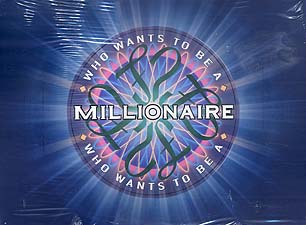The Rules in full:
No books or notes in sight during this test. Tests are marked by students after all 14 questions. Each question appears alone, and moves on with the words: "Is that your final answer?" Do not reply!
Some questions ask for one of A, B, C, or D; others ask for brief writing. Choosing X means no answer.
If you do not choose X but get a question wrong the student marker will note your virtual winnings at the last fall back position - either £1000 and £32000. There are 100 points in total available (so working out the percentage is very easy), and these need to be added up in the usual way from all questions.
The first time for X stops imaginary money winnings at the previous correctly answered question or fall back position but the marks continue (and so do continue to answer all questions).
The following offers only apply to multiple choice questions. Once used each offer is no longer available:
Offer 1: The teacher will ask if students want to ask the audience. Hands are raised at this point. If half or a majority of hands are raised, then the audience can be asked. Students may raise their hands when asked in turn if they think A, B, C or D is correct.
Offer 2: The teacher will ask if students want to phone a friend. Hands are raised at this point. If half or a majority of hands are raised, then a friend can be "phoned". The next part is for those who can offer an answer to raise their hands. The teacher selects one of these. An answer is suggested. If no one offers, a friend is not in and this offer still cannot be repeated.
Offer 3: The teacher will ask if students want 50 - 50. If half or a majority of hands are raised, two possible answers will be given from four, one of which is correct.
Some or all of these three can be used on one question.
|
